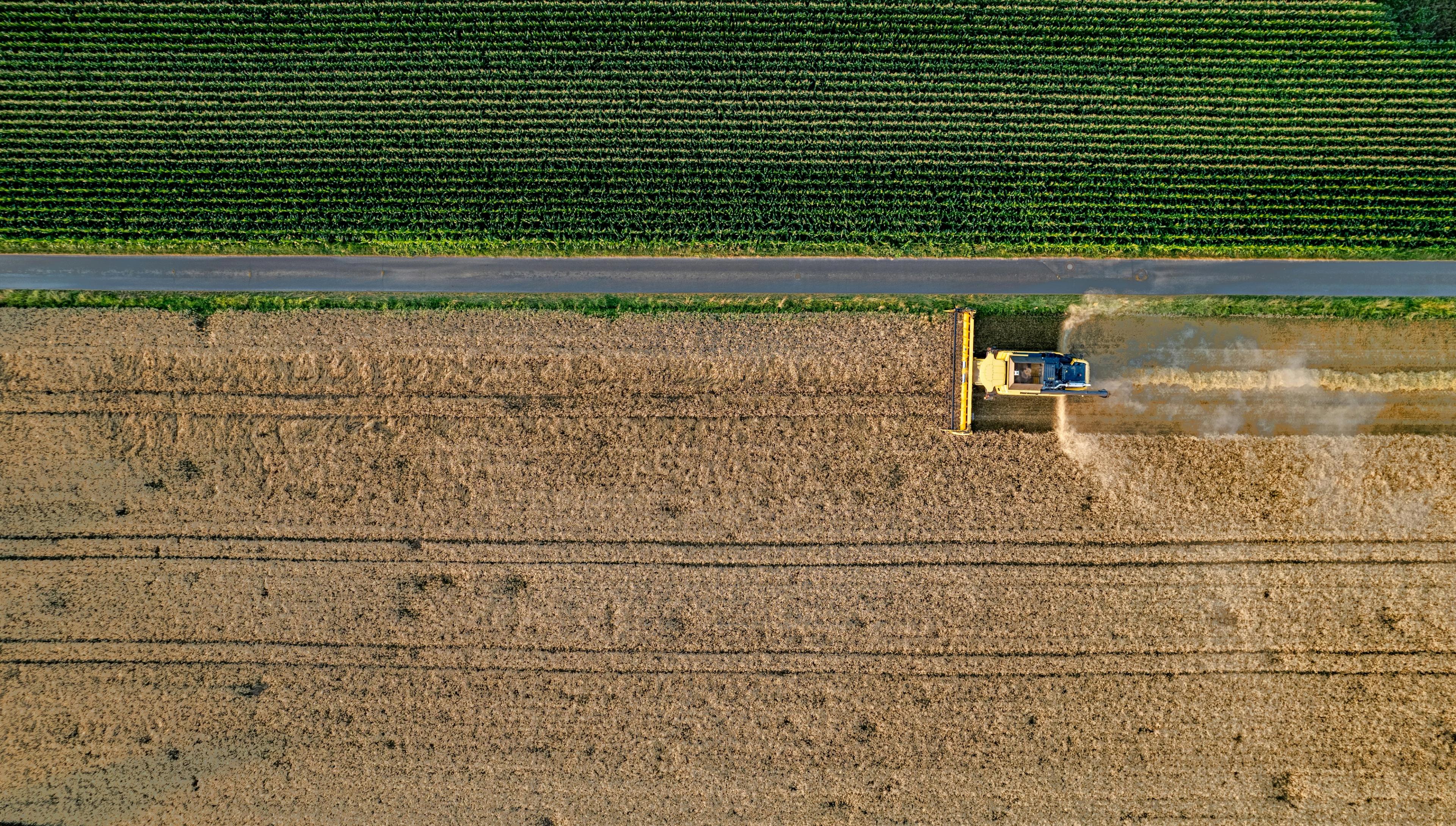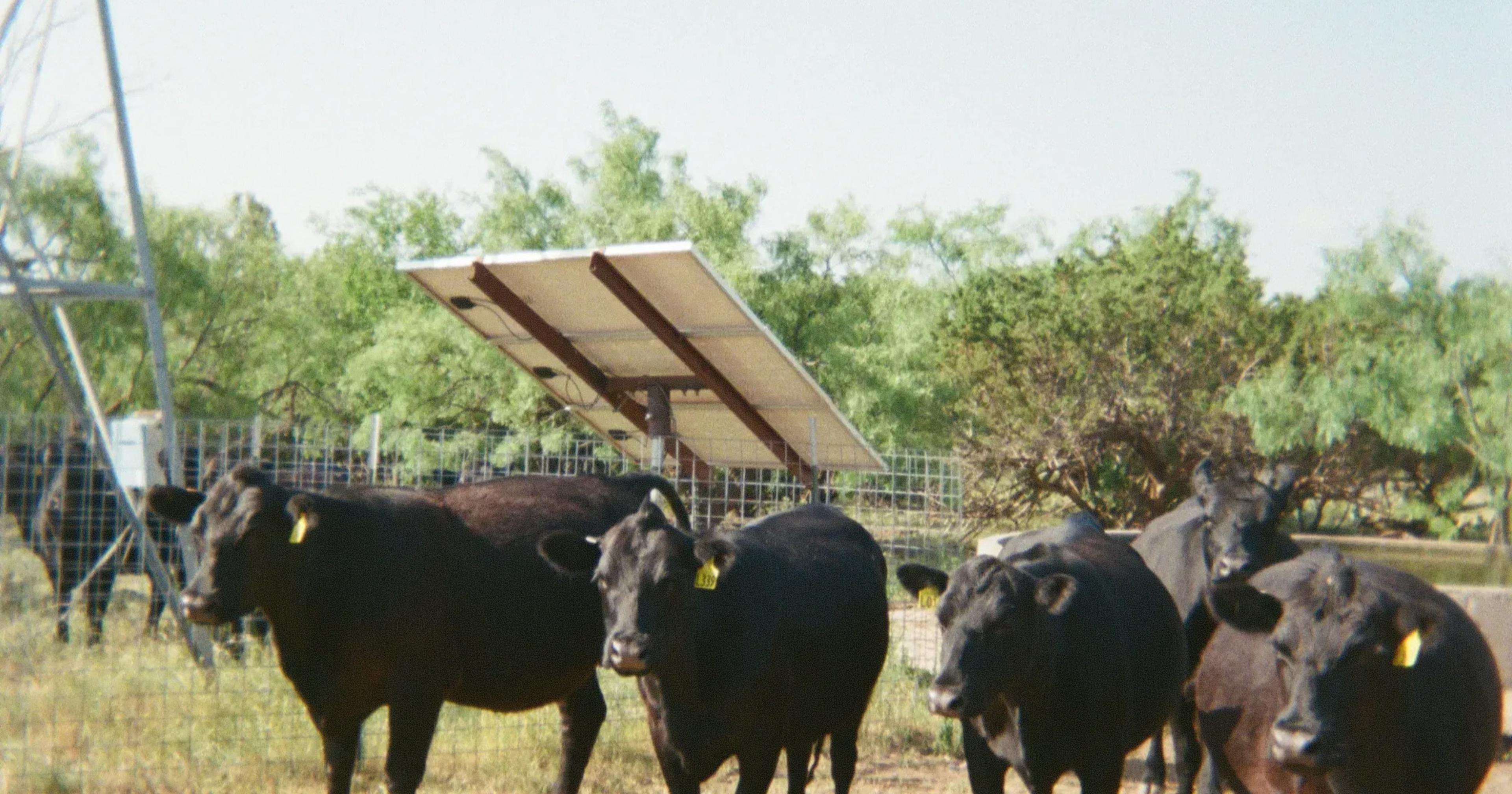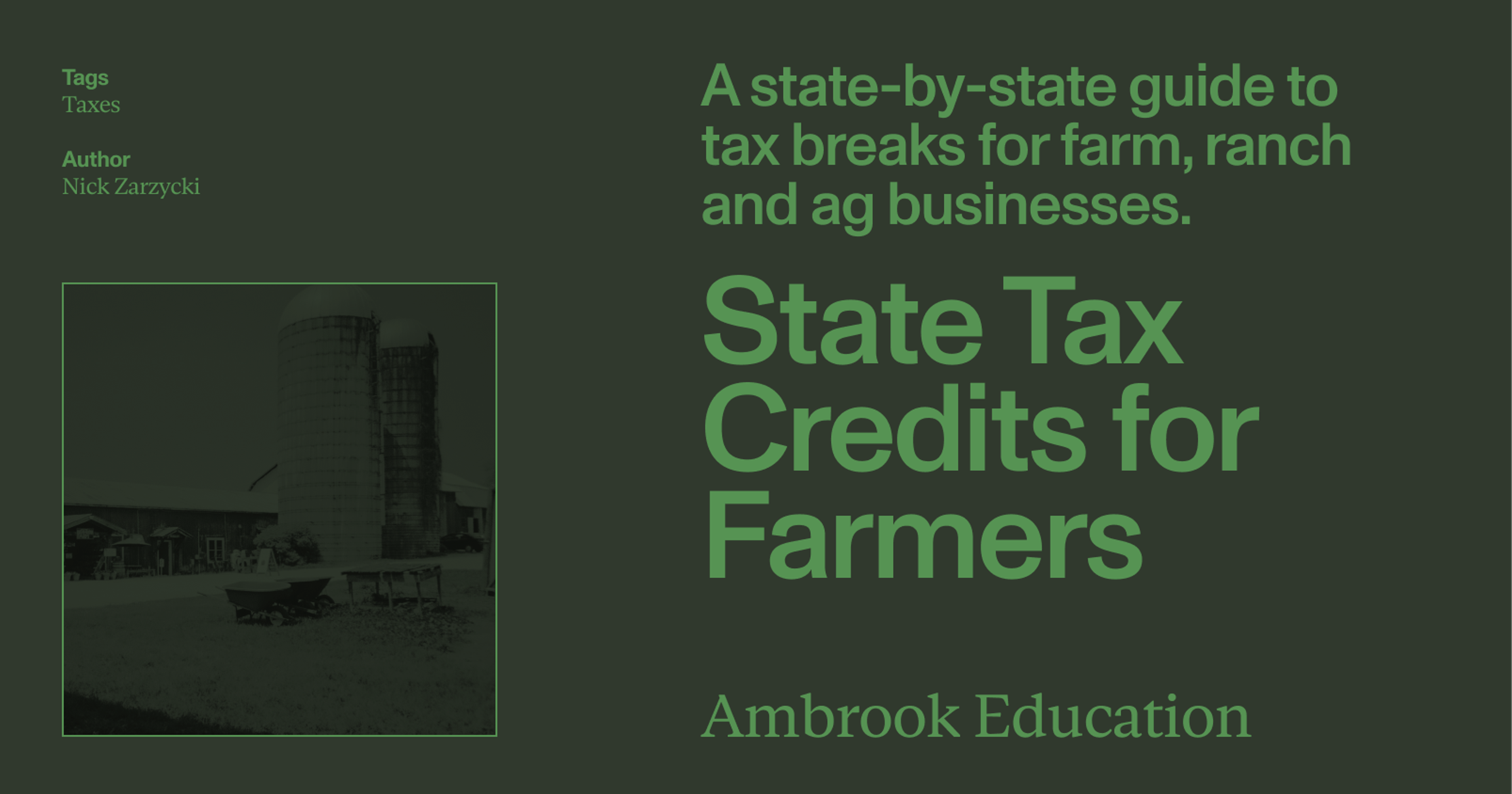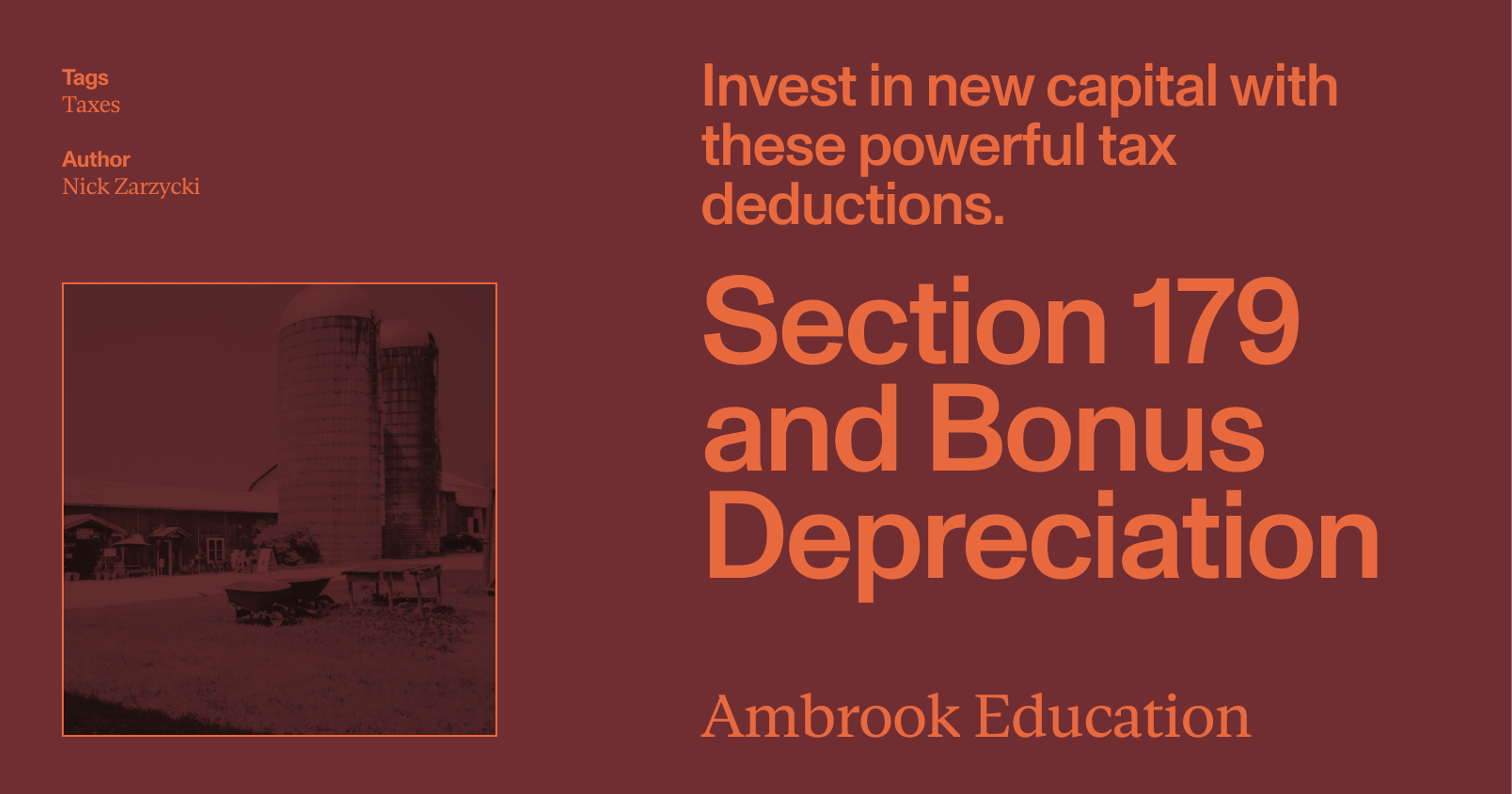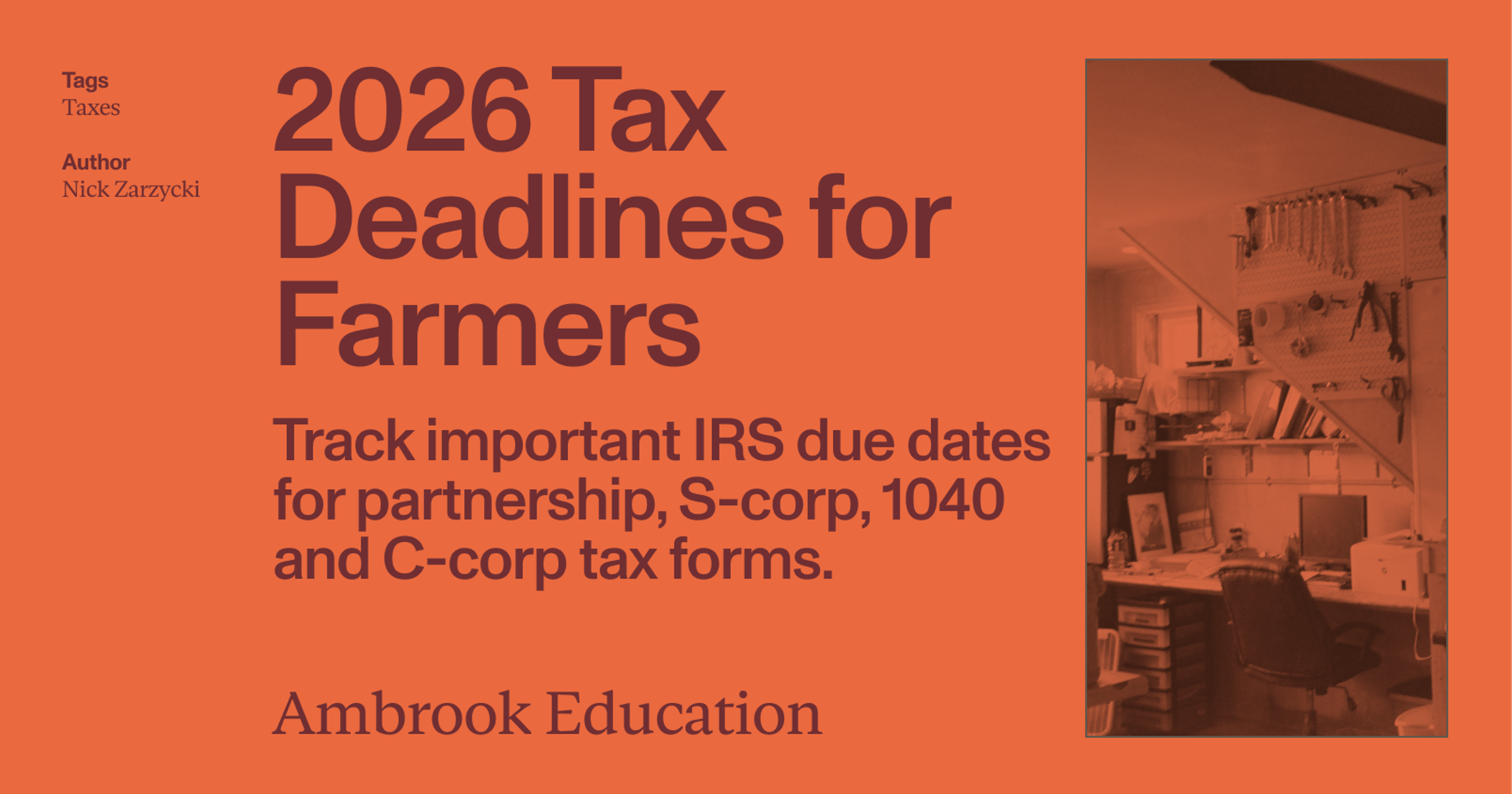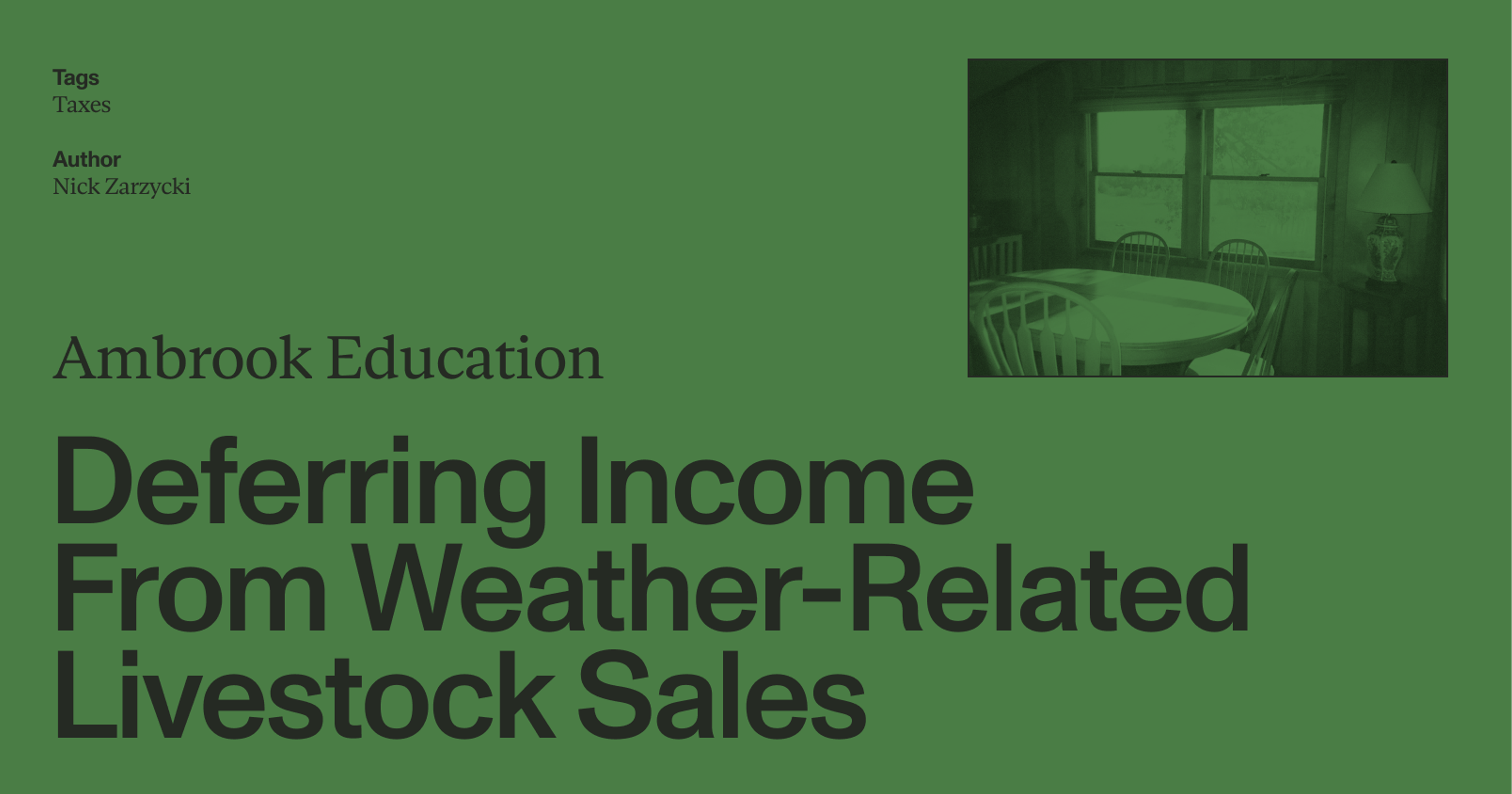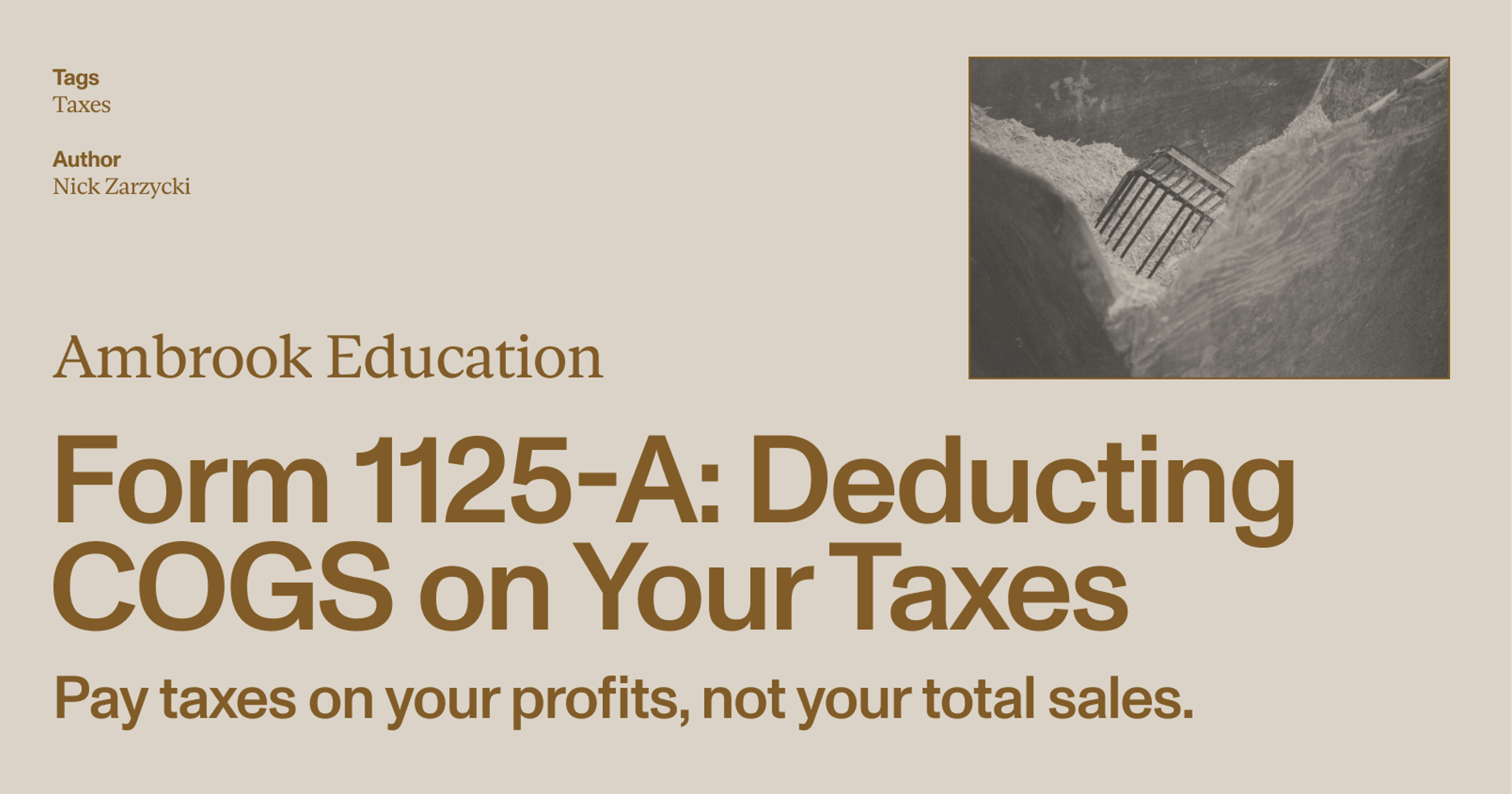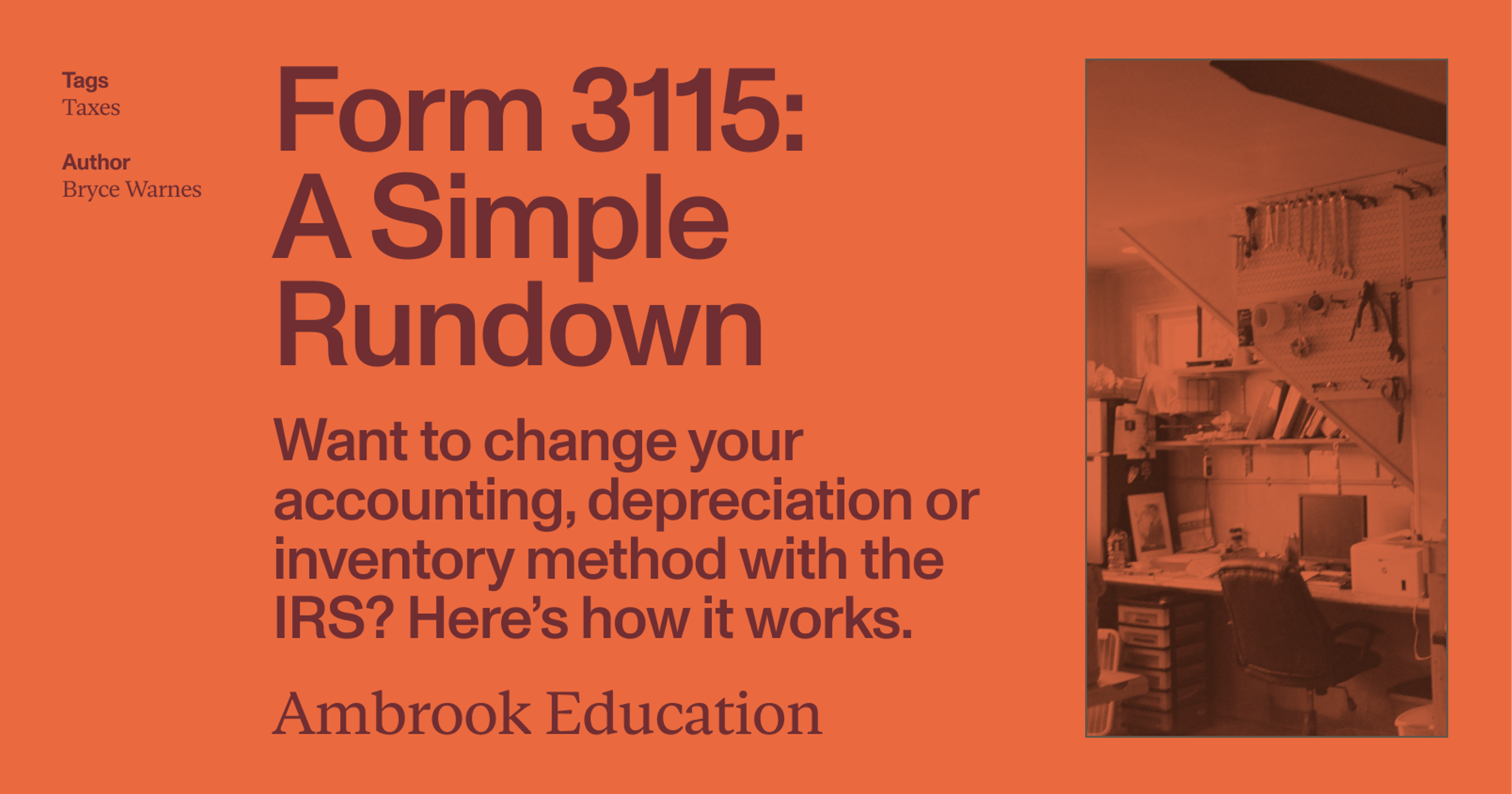The One Big Beautiful Bill Act (OBBBA) has big changes in store for ag producers, particularly when it comes to their taxes. Keep an eye on the following changes to minimize your tax bill.
Signed into law on July 4, 2025, the One Big Beautiful Bill Act (OBBBA) contains numerous provisions affecting agricultural producers in the U.S. One of the most significant changes is the way it affects their tax deductions, depreciation, expensing and tax credits.
OBBBA extended or made permanent many of the Tax Cuts and Jobs Act (TCJA) changes from the last Trump administration, including the lower 2017 tax brackets, increased standard deduction, 100% bonus depreciation and the QBI deduction. OBBBA also introduced a few new tax provisions, including a new deduction for seniors and a savings plan for children.
As tax experts have pointed out, it’s important to remember that ‘permanent’ can change if new legislation is passed in the future. And while the full extent of OBBBA’s tax impact remains to be seen, the following changes are worth keeping an eye on and asking your tax expert about.
2017 TCJA tax brackets are now permanent
The temporary tax cuts from the Tax Cuts and Jobs Act (TCJA) were originally set to expire after 2025, but OBBBA made the 10%, 12%, 22%, 24%, 32%, 35%, and 37% tax brackets from 2017 permanent.
The 10% and 12% brackets will also receive an extra adjustment for inflation for the 2026 tax year, allowing more income to be taxed at a lower rate.
Qualified Business Income (QBI) Section 199A deduction is now permanent with higher phaseout ranges
Originally introduced by the TCJA in 2017, the 20% Section 199A QBI deduction for owners of ‘pass-through’ business (sole proprietorships, partnerships, LLCs or S corporations) has been made permanent by OBBBA.
OBBBA also added a minimum deduction of $400 for businesses with at least $1,000 in qualified business income, and also increased the “phaseout” ranges for both SSTB and non-SSTB owners–from $50,000 to $75,000 for single filers and from $100,000 to $150,000 for joint filers.
That means that for 2025, single filers will have a phaseout range of $197,300 - $247,300, and joint filers will have a range of $394,600 - $494,600.
The Standard Deduction is permanent and increased
OBBBA made the standard deduction increase from the 2017 TCJA (which was set to expire in 2026) permanent. For 2025, the standard deduction is $15,750 for single filers, $23,625 for heads of households and $31,500 for married couples filing jointly.
The Personal Exemption is repealed
Prior to 2018, individuals could claim a personal exemption for themselves, their spouses and each of their dependents, which in 2018 would have been $4,150 per person. The personal exemption was repealed by TCJA from 2018 to 2025, and OBBBA repealed the personal exemption permanently.
Estate, Gift and Generation-Skipping Tax Exemption increases are now permanent
Originally set to expire in 2026, the estate, gift and generation-skipping tax exemption that was doubled by the TCJA in 2017 was made permanent by OBBBBA. Starting January 1, 2026, the amount will increase to $15,000,000 per person and $30,000,000 for married couples filing jointly, up from $13,990,000 for single filers and $27,980,000 for joint filers in 2025.
OBBBA did not change the step-up-in-basis rules or the annual gift exclusion amount, which for 2025 is $19,000.
There’s a new temporary deduction for seniors
For 2025-2028 OBBBA introduced a new deduction for individuals aged 65 or older, who may claim a $6,000 above-the-line deduction, whether they claim the standard deduction or itemize. (Or $12,000 for a married couple if both partners qualify.)
To qualify, the individual must turn 65 on or before the last day of the taxable year. The deduction begins to phase out for individuals with a modified adjusted gross income over $75,000, and completely phases out at $175,000. For joint filers, the phaseout range is $150,000 to $250,000.
Certain tax credits for children, dependants and childcare have increased
Child Tax Credit
OBBBA permanently increased the federal Child Tax Credit (CTC) for qualifying children under the age of 17 to $2,200 and indexed it for inflation starting 2026. It also made the $500 nonrefundable Credit for Other Dependants who don’t qualify for the CTC permanent.
Income phaseouts for the credits are still $200,000 for single filers and $400,000 for joint filers.
Child and Dependent Care Tax Credit
OBBBA increases the maximum credit from 35% to 50% of eligible expenses in 2026 for individuals with adjusted gross income (AGI) below $15,000
That percentage phases down for AGIs above $15,000, down to 35% for AGIs between $43,001 and $75,000. It phases down again for AGIs above $75,000, down to a minimum of 20% for AGIs of $103,000 or more.
The maximum eligible expenses remain unchanged at $3,000 for one qualifying child and $6,000 for two or more qualifying children.
Dependent Care Flexible Spending Account
Beginning in 2026, the amount that individuals can contribute to their dependent care flexible spending account increases from $5,000 to $7,500 per household ($3,750 for each married individual filing separately).
Employer-Provided Childcare Credit
Beginning in 2026, employers who provide childcare services to their employees can claim a credit of 40% of qualified expenses up to a maximum of $500,000–up from the pre-OBBBA amount of 25% and $150,000.
Qualifying small businesses get an even bigger tax break: 50% of expenses up to $600,000. (Businesses must meet the gross receipts test under Sec. 448(c) to qualify.) OBBBA also allows small businesses to pool their resources and use the credit to pay for onsite facilities or contracted care from third parties.
Certain Business Meal deductions will expire in 2026
Currently limited to 50% for 2025, the deduction for employer-provided meals will end completely in 2026. Remember that this deduction only applies to meals provided to W-2 employees onsite for the benefit of the employer. Meals that are provided as employee compensation might be eligible for a deduction under Section 274. The rules for travel meals and meals provided to current or potential clients remain unchanged.
State and Local Tax (SALT) deduction caps have changed
Individuals can take the state and local tax (SALT) deduction to deduct property, sales or income taxes they’ve paid to state and local governments to reduce their federal taxes.
OBBBA increased the limit or “cap” on the SALT deduction to $40,000 in 2025, up from $10,000 in 2024. That limit will increase by 1% per year until 2030, when the limit will revert to $10,000. This cap begins to phase out for individuals with a modified gross adjusted income over $500,000 ($505,000 in 2026, and a 1% increase every year after that).
Reporting thresholds for certain 1099 forms changed
Up to 2025, the threshold for filing IRS Form 1099-MISC or 1099-NEC was $600. OBBBA changed that threshold for 2026 to $2,000, which will be adjusted for inflation for 2027 and beyond.
This means that any payments made after December 31, 2025 are no longer subject to the old $600 threshold: they’ll either be subject to the new $2,000 threshold for 2026, or inflation-adjusted thresholds for 2027 and beyond.
Form 1099-K
IRS Form 1099-K, the form that payment processors like Venmo and PayPal use to report amounts they pay out to you, only gets filed if your payments reach a certain threshold.
Up to and including the 2023 tax year, that threshold was $20,000 and 200 transactions. Starting in 2024, the IRS removed the transaction volume threshold and the dollar amount began to decrease. Then OBBBA changed the thresholds for 2026 and future years back to $20,000 and 200 transactions.
Here’s the resulting 1099-K threshold schedule:
| Tax year | 1099-K Threshold |
|---|---|
| 2024 | $5,000 |
| 2025 | $2,500 |
| 2026 and onward | $20,000 and 200 transactions |
Certain green energy tax credits have been phased out
OBBBA phased out certain clean energy and “green” tax credits, creating important deadlines in 2025 and 2026 for individuals hoping to claim them on their taxes.
September 30, 2025 is the deadline to claim credits for new, used, and commercial EV, fuel cell and other clean vehicles (remember to get a time-of-sale document from your dealer to prove the purchase date).
December 31, 2025 is the deadline for solar panels, wind turbines, heat pumps, weatherization and other energy efficiency upgrade credits.
June 30, 2026 is the deadline to claim EV charging station, new energy-efficient home and commercial building upgrade credits.
Section 179 and Bonus Depreciation have been increased
OBBBA increased the Section 179 limit for tax years after December 31st, 2024 to $2,500,000 (previously $1,250,000) with phaseout starting at $4,000,000 (previously $3,050,000).
OBBBA also increased Bonus Depreciation–which was set to phase out over the next few years–to 100% for purchases made after January 19, 2025. This means that if you acquired property and placed it in service:
From 2018 through 2022, you can deduct 100% of its cost.
In 2023, you can deduct 80% of its cost.
In 2024, you can deduction 60% of its cost
Between January 1-19, you can deduct 40% using bonus depreciation.
After January 19th, 2025, you can choose whether to deduct 40%, 60%, or 100% for bonus depreciation.
Gain from the Sale or Exchange of Farmland Property to Qualified Farmers Election
OBBBA created a new election that sellers can make when selling farmland to a qualified farmer (i.e., someone actively engaged in farming) which allows them to pay the taxes on the gain in four equal installments.
This election is only available to sellers who have either farmed the land themselves or leased it to a qualified farmer for 10 years. The election can only be made if the land is subject to a covenant or legal restriction prohibiting use of the land for non-farming purposes for 10 years, a copy of which must be enclosed with the tax return.
Grow your business and shrink your tax bill with Ambrook
With Ambrook, every transaction is automatically imported from your bank account and categorized, making it easier to track qualifying expenses and claim credits and deductions on your tax return.
Plus, with time-saving bookkeeping automation features, automatically-generated financial reports, streamlined bill pay and invoicing, and other powerful accounting and financial management tools, Ambrook doesn’t just make expense and revenue tracking simple: it takes the guesswork out of running your business. Want to learn more? Schedule a demo today.
Want to learn more about Ambrook?
This resource is provided for general informational purposes only. It does not constitute professional tax, legal, or accounting advice. The information may not apply to your specific situation. Please consult with a qualified tax professional regarding your individual circumstances before making any tax-related decisions.

